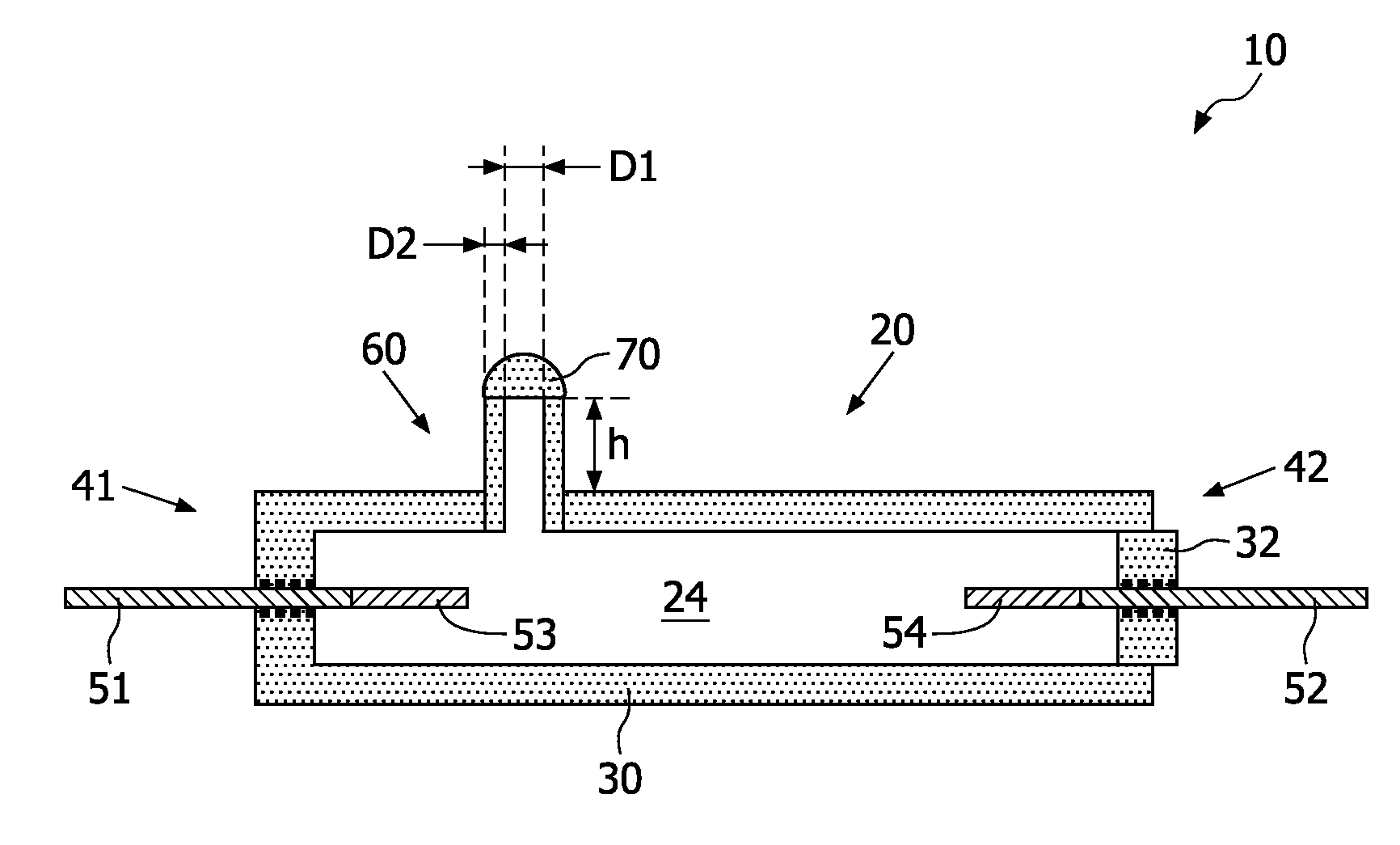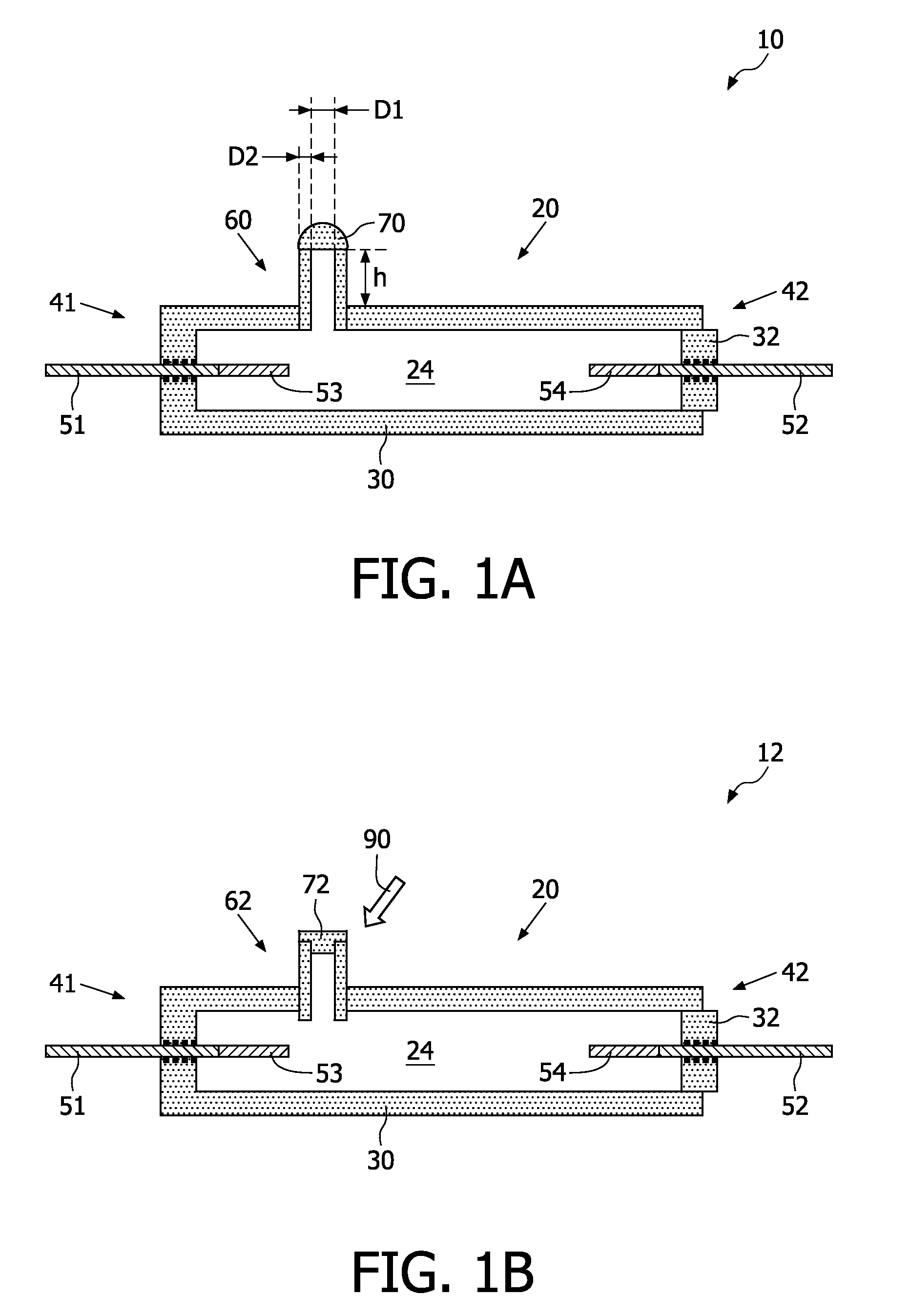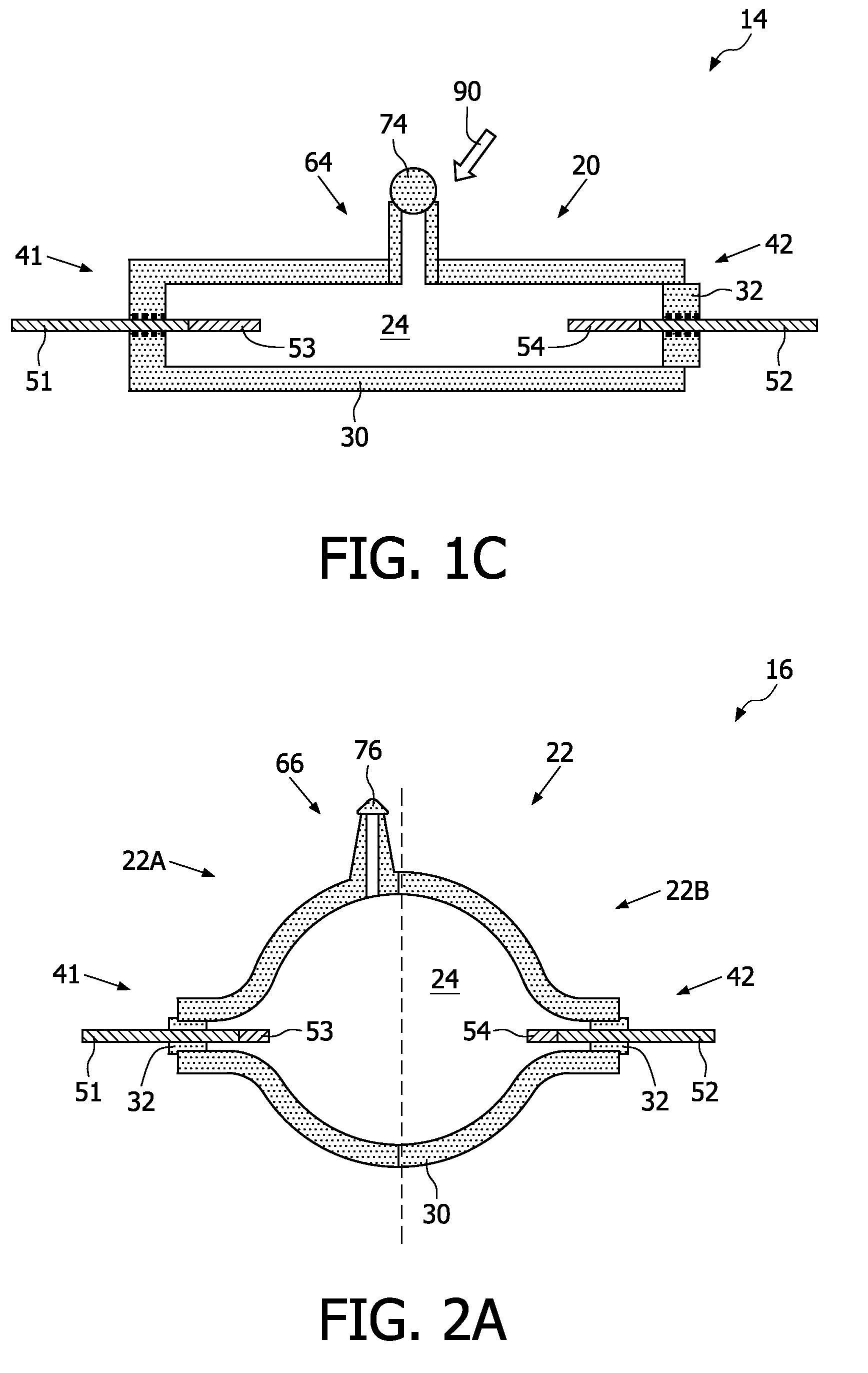Ceramic burner for ceramic metal halide lamp
a ceramic metal halide lamp and ceramic burner technology, which is applied in the manufacture of cold cathode, electrode system, electric discharge tube/lamp, etc., can solve the problems of no longer being able to seal the known container via local heating, cracks in the ceramic material of the container, etc., and achieve less sealing material, less time, and less tolerances on the projecting end of the tub
- Summary
- Abstract
- Description
- Claims
- Application Information
AI Technical Summary
Benefits of technology
Problems solved by technology
Method used
Image
Examples
Embodiment Construction
[0031]FIGS. 1A, 1B and 1C are cross-sectional views of embodiments of a ceramic burner 10, 12, 14 according to the invention having a cylindrical discharge vessel 20. The ceramic burner 10, 12, 14 comprises a discharge vessel 20 enclosing a discharge space 24. The discharge vessel 20 is substantially formed from a ceramic material, such as aluminum oxide (Al2O3). The discharge vessel 20 comprises a first and a second end portion 41, 42 where the current supply conductors 51, 52 are passed through the discharge vessel 20. The current supply conductors 51, 52 are preferably formed by rods 51, 52 directly sintered into the ceramic material of the discharge vessel 20. Generally, an electrode 53, 54 is connected to the current supply conductors 51, 52 at a side of the current supply conductors 51, 52 facing the discharge space 24. The electrode 53, 54 is often made from tungsten. The current supply conductors 51, 52 are connected to the electrodes 53, 54 for supplying power to the electr...
PUM
| Property | Measurement | Unit |
|---|---|---|
| thickness | aaaaa | aaaaa |
| thickness | aaaaa | aaaaa |
| inner diameter | aaaaa | aaaaa |
Abstract
Description
Claims
Application Information
 Login to View More
Login to View More - R&D
- Intellectual Property
- Life Sciences
- Materials
- Tech Scout
- Unparalleled Data Quality
- Higher Quality Content
- 60% Fewer Hallucinations
Browse by: Latest US Patents, China's latest patents, Technical Efficacy Thesaurus, Application Domain, Technology Topic, Popular Technical Reports.
© 2025 PatSnap. All rights reserved.Legal|Privacy policy|Modern Slavery Act Transparency Statement|Sitemap|About US| Contact US: help@patsnap.com



